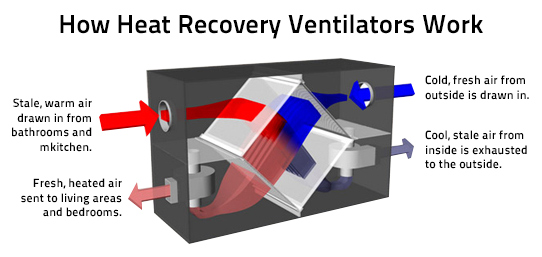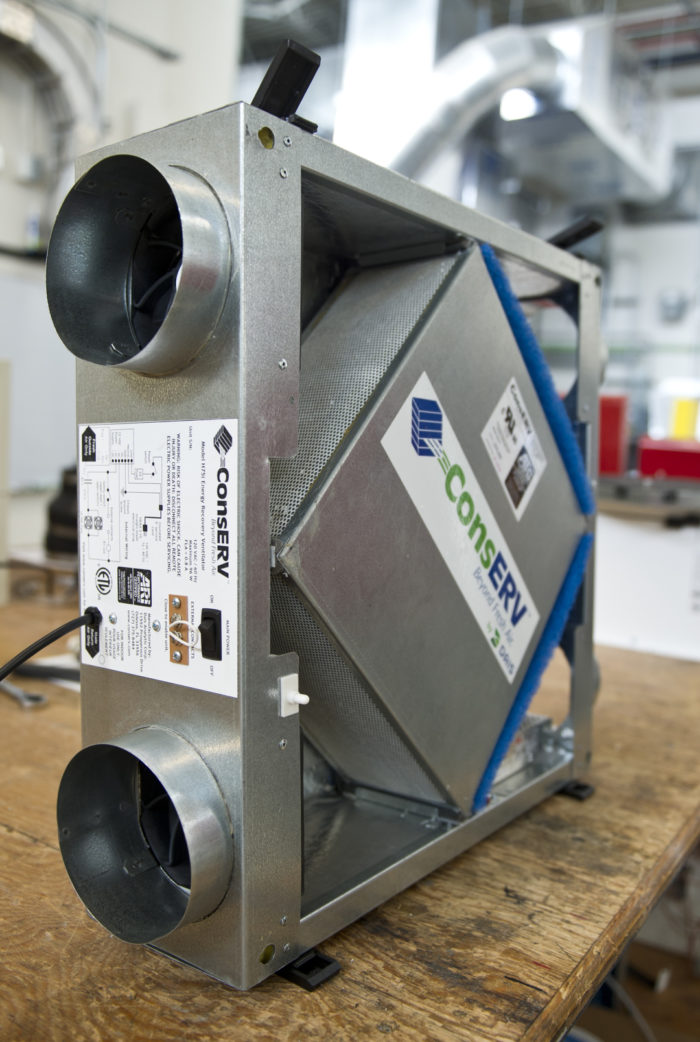The All-Inclusive Overview to the Uses of Heat Recovery Ventilation in Modern Buildings
Heat Recovery Ventilation (HRV) systems represent a significant advancement in developing technology (HRV Heat Recovery Ventilation). They provide a method for trading stagnant interior air with fresh outside air while lessening power loss. This technique not only improves indoor air top quality however additionally adds to energy effectiveness in both household and commercial buildings. Recognizing the different applications and advantages of HRV can expose its critical duty in modern style and sustainability efforts. The ramifications of this innovation are worth discovering further
Comprehending Heat Recovery Ventilation Solutions

Lots of contemporary buildings focus on energy efficiency, understanding warmth healing ventilation (HRV) systems is important for optimizing indoor air high quality and reducing energy intake. HRV systems work by moving heat from stagnant interior air to inbound fresh air, efficiently keeping comfortable indoor temperatures while decreasing power loss. These systems include a warmth exchanger, fans, and ductwork that promote the flow of air. Throughout winter months, HRV devices capture and recycle warm from the outgoing air, while in summer season, they can help cool down inbound air. By constantly exchanging air, HRV systems also minimize moisture and the concentration of interior contaminants. Correct setup and upkeep of HRV systems are vital for their performance and effectiveness in improving overall structure performance and comfort.
Advantages of Heat Recovery Ventilation
Heat recovery ventilation systems supply various benefits that enhance both energy efficiency and indoor air high quality in modern structures. By recording and reusing power from exhaust air, these systems significantly lower cooling and heating prices, resulting in lower energy intake. They maintain a steady flow of fresh outdoor air, reducing the threat of interior air contaminants and allergens. This continuous exchange assists regulate humidity degrees, stopping mold and mildew development and guaranteeing a much healthier living environment. Furthermore, HRV systems add to sustainability objectives by lowering general carbon impacts. Their capability to maximize ventilation without sacrificing thermal convenience makes them a useful enhancement to contemporary building style, promoting both economic and eco-friendly advantages.
Applications of HRV in Residential Buildings
As homeowners significantly prioritize power efficiency and indoor air top quality, the applications of warm recovery air flow (HRV) systems in residential buildings have come to be a lot more common. HRV systems are specifically valuable in snugly secured homes, where keeping fresh air circulation is important for protecting against dampness buildup and interior toxins. They you can check here efficiently move heat from outward bound stale air to incoming fresh air, lowering power prices connected with heating & cooling. Furthermore, HRVs can boost comfort degrees by regulating moisture and temperature. They are additionally adaptable for various residential styles, including single-family homes and multi-unit buildings. On the whole, incorporating HRV systems sustains sustainable living methods while making sure a much healthier indoor atmosphere for occupants.
HRV in Commercial and Industrial Setups
In commercial and commercial settings, the implementation of heat recuperation ventilation (HRV) systems has actually come to be progressively essential for maximizing energy performance and keeping air quality. These systems efficiently transfer heat from exhaust air to inbound fresh air, decreasing the need for added heating or cooling. This not just lowers power costs but likewise adds to sustainability initiatives. Industries such as manufacturing, warehousing, and office complex profit considerably from HRV systems, as they help control temperature level and humidity degrees, making sure a comfortable and effective environment. HRV systems help in removing contaminants and excess moisture, improving interior air high quality. As policies around air high quality become more stringent, the adoption of HRV technology is most likely to expand, making it a critical part of modern commercial and industrial infrastructure.
Future Patterns in Heat Recovery Ventilation Innovation

Often Asked Questions
How Does Heat Recovery Ventilation Impact Indoor Air Quality?
Heat recovery ventilation considerably boosts interior air quality by continually trading stagnant indoor air with fresh outdoor air while recouping energy. This process reduces toxins, keeps perfect moisture degrees, and guarantees a healthier environment for occupants.
Can HRV Equipments Be Installed in Existing Buildings?
HRV systems can indeed be installed in existing buildings. Retrofitting might require alterations to ductwork and air flow designs, but it considerably improves energy effectiveness and interior air quality, making it a practical choice for older structures.
What Maintenance Is Required for HRV Systems?

Exist Particular Climates Where HRV Is Extra Effective?
Heat recovery ventilation systems are particularly reliable in climates with considerable temperature level distinctions in between periods. These systems optimize energy effectiveness by recovering heat from exhaust air, making them excellent for both chilly and reasonably warm atmospheres.
Just How Do HRV Equipments Affect Energy Costs?
